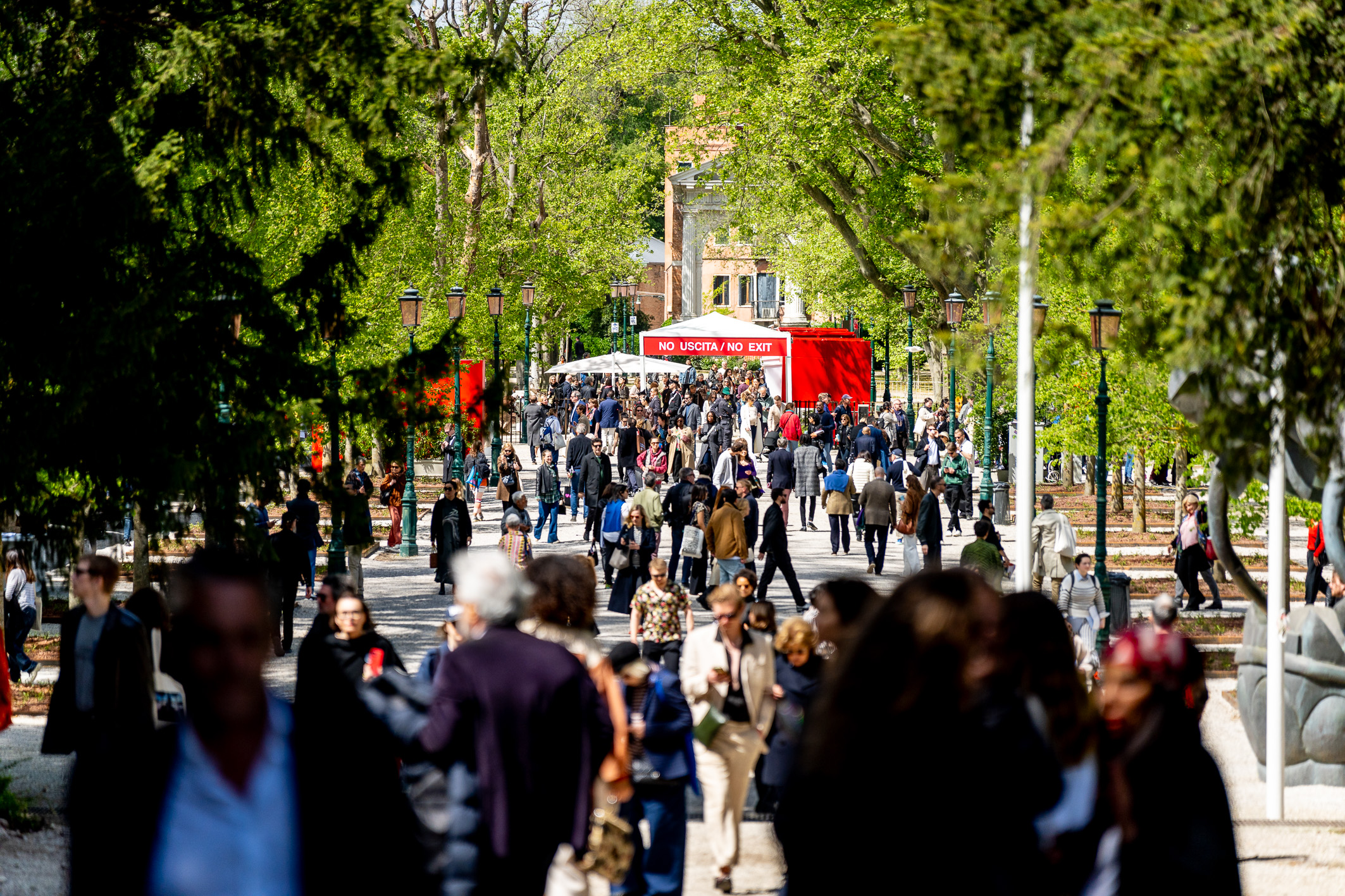Venice Biennale Opens Giardini to a New National Pavilion
By HG Masters

View of the main avenue through the Giardini from the 60th Venice Biennale in 2024. Photo by Andrea Avezzu. Courtesy La Biennale di Venezia.
Long declared at full capacity, with no real estate remaining in the leafy grounds of the Giardini, the Venice Biennale has announced that Qatar will propose a new national pavilion structure for the coveted grounds. The small, wealthy Gulf state has never previously organized an official national pavilion at the Biennale.
No further details about the pavilion proposal were announced on July 24 in a statement from the Biennale. Instead, the president of La Biennale di Venezia, Pietrangelo Buttafuoco, described the Biennale as, “historically the thermometer of geopolitics” and as the “common home of peoples called to the disciplines of contemporary arts.” The municipality of Venice and Qatar Museums had earlier signed a protocol of cooperation in June, after Qatar Airways resumed direct flights to the Veneto region’s Marco Polo Airport, across the lagoon from the island-city.
“The reading of the world and its transformations—where the Pavilions of the many nations present in Venice are the fresco of that precise destiny that is the future—sees in Doha, today, the artistic tension consistent with the reason proper to the Fondazione La Biennale di Venezia,” Buttafuoco’s statement concluded.
There are more than 90 nations officially participating in this year’s edition, but Qatar is not one of them. Instead, running in simultaneously with the Biennale at a rented palazzo near the Academia bridge, Qatar Museums presented an exhibition of moving-image works by 40 artists and directors from West Asia, South Asia, and North Africa titled “Your Ghosts Are Mine – Expanded Cinemas, Amplified Voices.” These films were either screened at the Doha Film Festival or are video works from Mathaf: Arab Museum of Modern Art’s and the Art Mill Museum’s collections.
The last nation granted a new pavilion in the Giardini was South Korea, which opened in 1995 and was designed by Seok Chul Kim and Franco Mancuso. The building is small compared to others. The Arts Council Korea (ARKO) submitted a proposal in December 2018 to renovate and expand its space, but it has not been granted permission by the Biennale to do so.
The last major construction in the Giardini was the complete overhaul of the Australia Pavilion in 2015, which replaced a small glass-and-steel temporary structure with a giant, funereal black-granite-clad box designed by Denton Corker Marshall.
The Biennale’s decision might also cause rancor with many nations who have long participated in the Biennale, and have large and active national art scenes but have been denied such an opportunity. Among these countries are potentially China, Saudi Arabia, the United Arab Emirates, Türkiye, and many others who are leasing renovated spaces in the Arsenale complex or stage exhibitions at venues beyond the Biennale’s grounds.
HG Masters is the deputy editor of ArtAsiaPacific.







